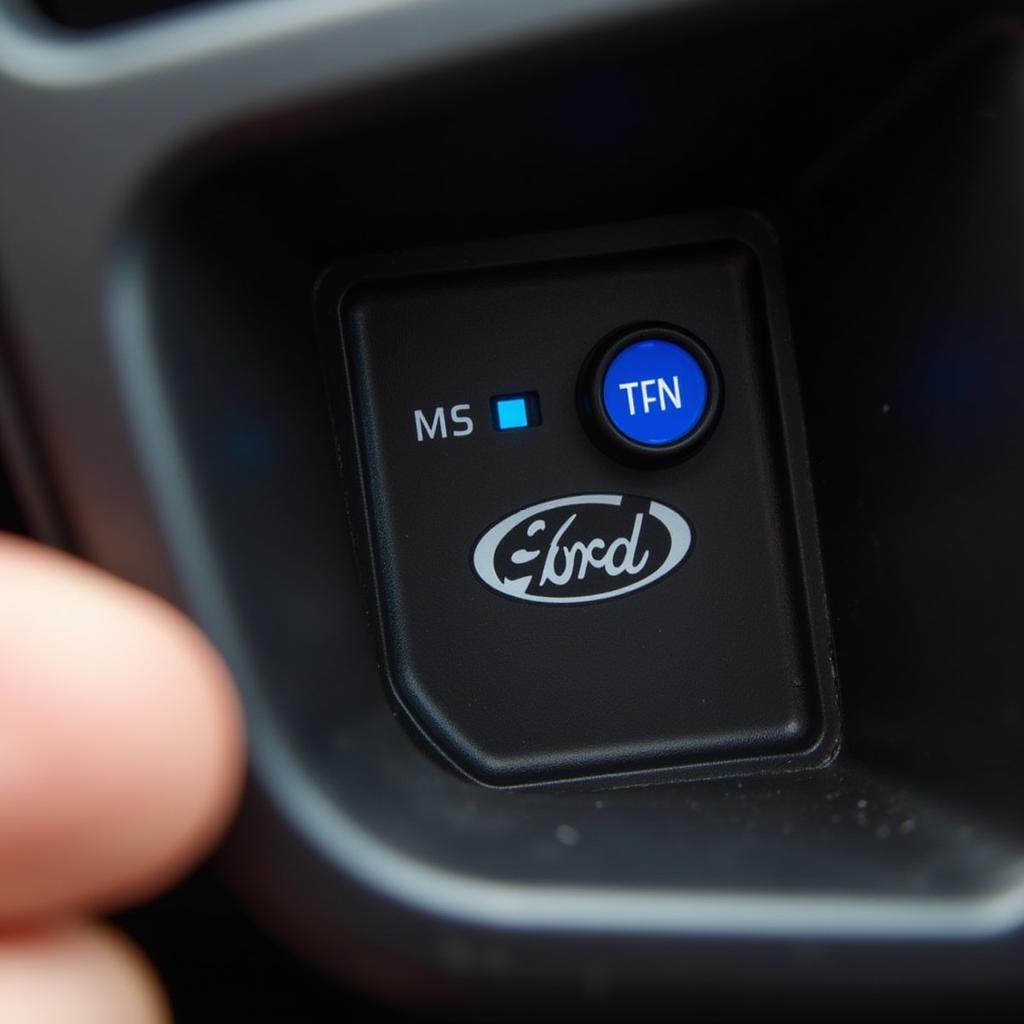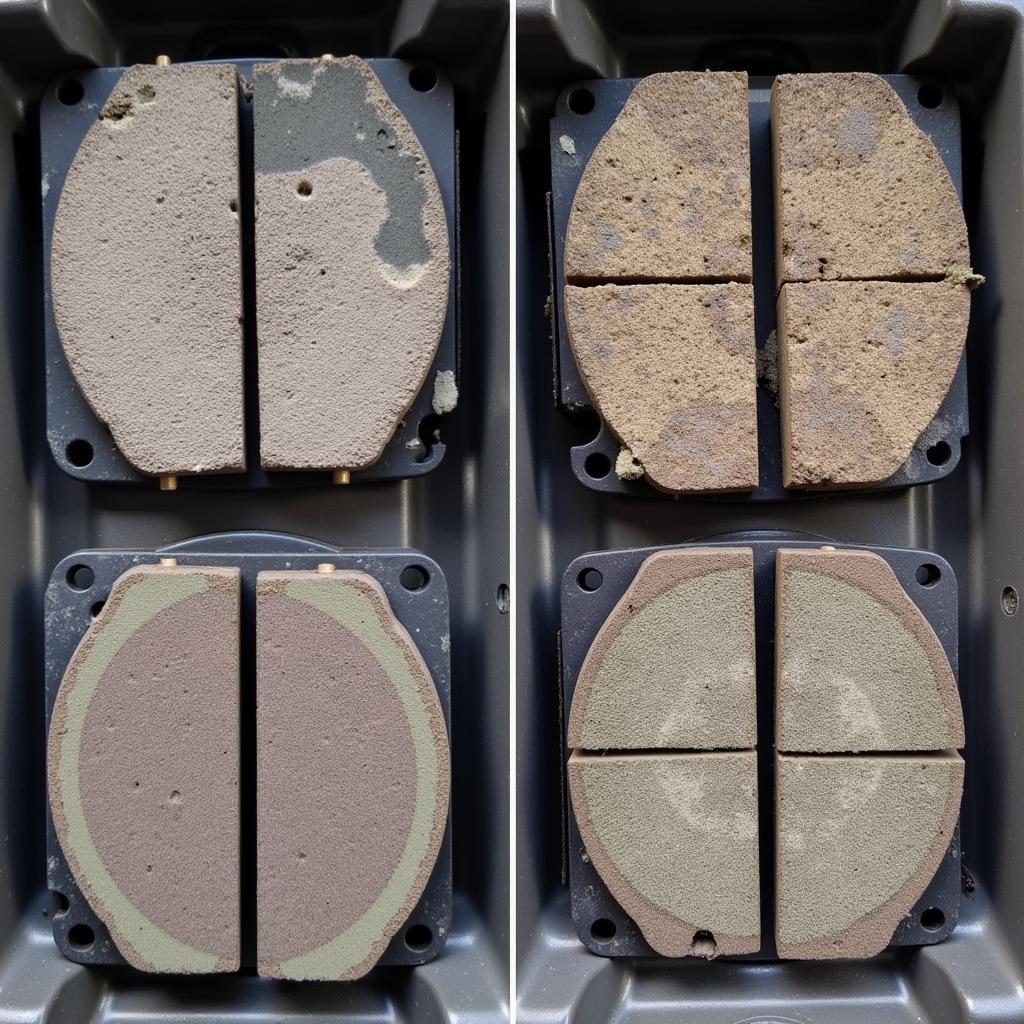The Ford brake warning light is an essential safety feature, illuminating on your dashboard to signal potential issues within your braking system. While it could be something as simple as an engaged parking brake, a glowing or flashing light often points to a more serious problem demanding immediate attention. This article delves into the common causes behind a Ford brake warning light switch activation and guides you toward effective solutions, ensuring your vehicle stays safe and reliable.
Decoding Your Ford Brake Warning Light
Understanding the nuances of your Ford brake warning light behavior can offer valuable clues about the underlying issue:
- Solid Light: A constantly illuminated brake warning light generally indicates one of two things: either your parking brake is engaged, or there’s a problem with your brake fluid level.
- Flashing Light: A flashing brake warning light usually signals a more critical issue with your braking system, often related to a malfunctioning ABS (Anti-lock Braking System) or a significant brake fluid leak.
Common Culprits Behind a Triggered Brake Warning Light Switch
Several factors can lead to a Ford brake warning light switch activation. Here’s a closer look at some of the most common culprits:
1. Low Brake Fluid Level
One of the most frequent reasons for a brake warning light is a low brake fluid level. Brake fluid is the lifeblood of your braking system, transmitting the force from your foot on the pedal to the brakes themselves. A leak in the system will reduce the fluid level, compromising braking performance.
 Checking Ford Brake Fluid Reservoir
Checking Ford Brake Fluid Reservoir
2. Worn Brake Pads
Your Ford vehicle is designed to alert you when brake pads wear down and require replacement. As the pads thin out, it affects the brake fluid level within the system, often triggering the warning light.
 Worn Brake Pads on a Ford
Worn Brake Pads on a Ford
3. Faulty Brake Light Switch
The brake light switch, located behind your brake pedal, plays a critical role in activating your brake lights when you apply the brakes. A malfunctioning switch can disrupt this process and illuminate the brake warning light.
4. ABS Issues
Modern Ford vehicles are equipped with an Anti-lock Braking System (ABS), designed to prevent wheel locking during hard braking. A malfunctioning ABS module, faulty wheel speed sensors, or wiring issues within the system can trigger the brake warning light.
 Ford ABS Control Module Location
Ford ABS Control Module Location
5. Brake Line Leak
A leak in your brake lines, which carry brake fluid, is a serious issue. This leak directly impacts your ability to stop the vehicle and necessitates immediate attention.
6. Master Cylinder Problems
The master cylinder converts the mechanical force from your brake pedal into hydraulic pressure, activating the brakes. A faulty master cylinder can disrupt this process, leading to a loss of braking pressure and a lit warning light.
“A properly functioning brake system is non-negotiable when it comes to vehicle safety,” says John Miller, a seasoned automotive engineer with over 20 years of experience at a leading car manufacturer. “Addressing brake warning lights promptly and effectively can be the difference between a safe stop and a potential accident.”
Troubleshooting a Ford Brake Warning Light
While a professional inspection is recommended for any brake warning light, here are some preliminary checks you can perform:
- Check Your Parking Brake: Ensure the parking brake is fully disengaged.
- Inspect Brake Fluid Level: Locate the brake fluid reservoir under the hood and check if the fluid level falls between the minimum and maximum lines.
- Examine Brake Pads: Visually inspect your brake pads for wear and tear. If they appear thin, it’s time for a replacement.
When to Seek Professional Help
If the warning light persists after these checks or you suspect a more complex issue, it’s crucial to seek immediate professional assistance. Continuing to drive with a brake warning light illuminated can be extremely dangerous.
2000 ford f53 parking brake warning light switch: Find specialized information for specific Ford models like the F53.
Maintaining Your Ford Braking System
Regular maintenance is key to preventing brake problems. Here are some essential tips:
- Adhere to Brake Fluid Flush Intervals: Refer to your owner’s manual for recommended brake fluid flush intervals, usually every 2-3 years.
- Inspect Brake Lines Regularly: Look for any signs of leaks, cracks, or damage to the brake lines.
- Address Warning Lights Promptly: Never ignore a brake warning light, as it signals a potential safety hazard.
Conclusion
The Ford brake warning light switch is your vehicle’s way of communicating potential issues within your braking system. Recognizing the different warning light behaviors and understanding the common causes can help you take timely action. While preliminary checks can be helpful, seeking professional diagnosis and repair is crucial to ensure your safety and the optimal performance of your Ford vehicle.
Remember, a well-maintained braking system is fundamental to safe driving. Addressing brake issues promptly and effectively keeps you, your passengers, and everyone else on the road safe.
1972 ford brake warning light: Explore resources tailored to specific model years like the 1972 Ford.
2005 ford ranger both brake warning lights: Discover information relevant to specific Ford models and their unique brake warning light configurations.

